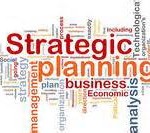One CEO complained that his financial person was preventing his company from growing. How was that possible? Over the years when issues arose, the financial person would develop a system of checks and balances that would prevent the issue from occurring again. While conceptually it is good to have policies and procedure to prevent issues from arising, continuously adding more and more can simply become cumbersome and impede forward motion. The CEO knew the solution to cut through the red tape was to automate the check and balance systems and to delegate the responsibility so that more than one person was responsible. The financial person had trouble giving up the responsibility and did not want to change. Eventually the CEO hired a coach to help the financial person accept and embrace the required changes.
What about us? What can we learn?
While this looks like an obvious problem, are we guilty of similar behavior? Do we create bottlenecks to our organization’s growth and success?
• Are we stuck doing things the way we have always done them, or do we continuously look for better ways? Do we listen to others’ solutions?
• Do we hold on to responsibility, stalling the growth of those who could use the challenges for professional development?
• Have we really assessed the risk and put the right amount of effort in prevention – rather than too much effort, given the risk associated with a negative outcome?
• Are we tied up in the day-to-day rather than focusing on the big areas that will really position the company for future success?
Suggested Course of Action
If you find that you are constantly being pulled into the day-to-day firefighting or that you are the rate-determining step for moving things forward, you need to reassess: what is the best use of your time? Then develop a list of:
1. What will you start doing? (E.g. more time on long-term strategic projects.)
2. What will you stop doing? (E.g., resolving minor customer service issues, rather than allowing your customer service representatives to make decisions up to a certain amount.)
3. What will you continue doing? (E.g. continue speaking at industry events to raise your company’s visibility.)
A Second Step
Have your direct reports develop a similar list. Will they be able to handle (start) some of the tasks you want to stop doing? These tasks should appear on their “start” list. Are there “stop” tasks being delegated to their direct reports?
Developing a START/STOP/CONTINUE LIST will cause you to reflect on how you spend your time and how you should be spending your time. By comparing your list with others, you will be able to have constructive dialogue on tasks that need to be delegated and what skills need to be enhanced in order to do these well. These discussions will help the senior management team cease to be an impediment to growth, but rather, free up their time to focus on the strategic projects, while enhancing middle management’s ability to participate and develop the skills needed to move into leadership positions.
To contact Denise Harrison: harrison@thestratplan.com or call 910-763-5194.
(c)Spex, Inc. 2016 Reprint permission granted with full attribution.




